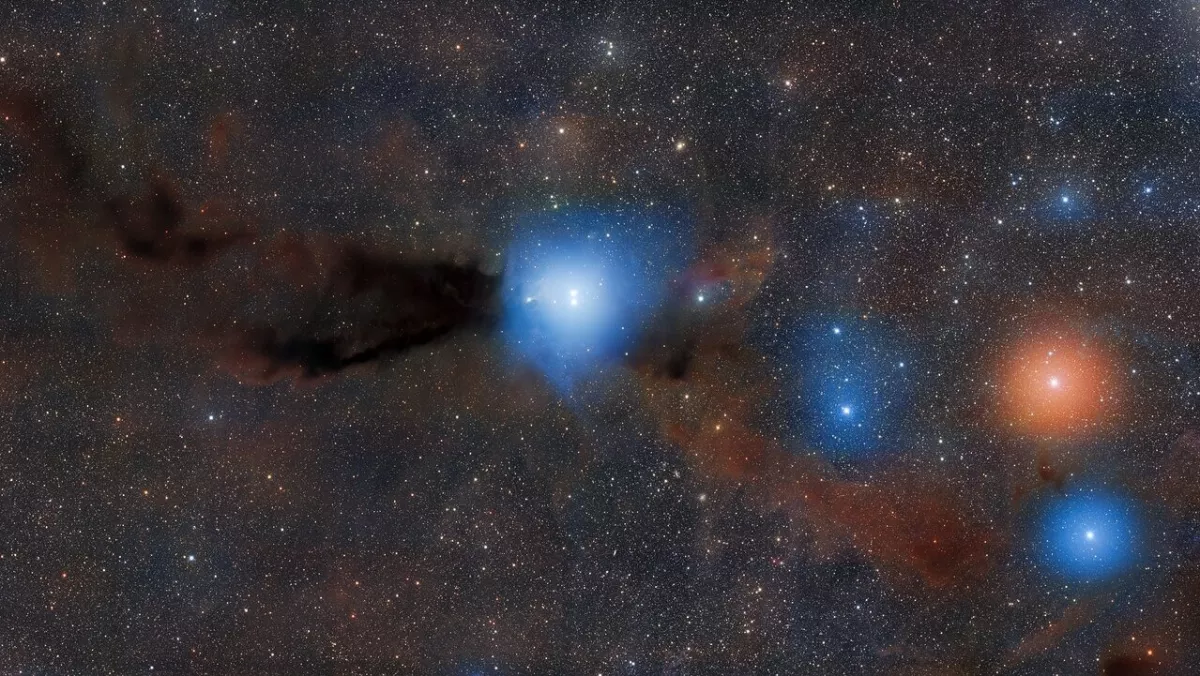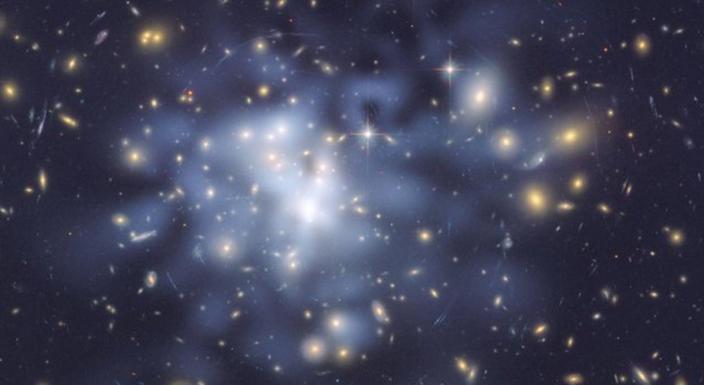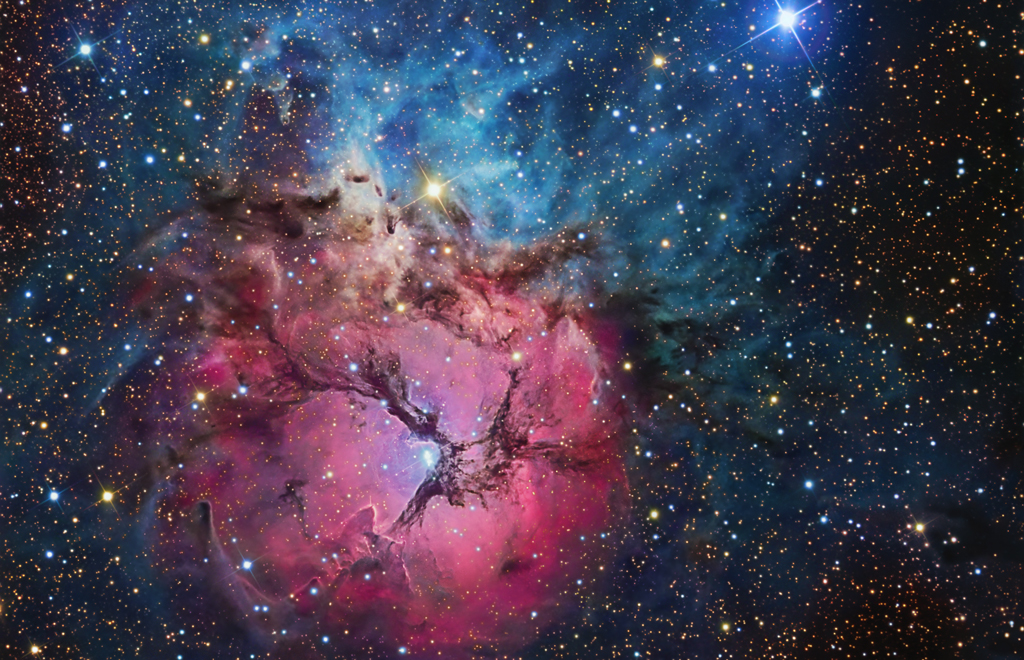In a breathtaking celestial display, astronomers have been privileged to observe the spectacular emergence of two newborn stars from their gas and dust cradles within a sprawling stellar nursery. Situated at the core of the vast interstellar cloud known as Lupus 3, these nascent stars, referred to as “protostars,” mark a significant milestone in the ongoing process of star formation.

The observation of the central region of Lupus 3 was made possible through the utilization of the Dark Energy Camera, which is housed at the Cerro Tololo Inter-American Observatory in Chile. This remarkable imagery holds great potential for shedding light on the elusive mysteries surrounding the intricate phenomenon of star formation.
As these infant stars made their triumphant escape from the very matter that had nurtured their creation, their radiance illuminated the surrounding space, bestowing luminosity upon the reflection nebula known as Bernes 149. Reflection nebulas are composed of interstellar dust clouds that lack the necessary heat to emit radiation independently. However, true to their name, these nebulas possess the extraordinary ability to reflect the light emitted by nearby stars, transforming into mesmerizing cosmic beacons that alert astronomers to the presence of newborn stars.

The fiery blue stars residing within Lupus 3, specifically designated as HR 5999 and HR 6000, imbue Bernes 149 with a vibrant blue aura. This striking visual contrast is further accentuated by the dark nebula of gas, Lupus 3 itself, which appears as an ominous black cloud in the imagery captured by the Dark Energy Camera.
While Lupus 3 is just one among numerous clouds within the expansive Lupus cloud complex, it occupies a substantial portion of the sky, equivalent to approximately 24 times the width of the moon. The exceptional wide field of view offered by the Dark Energy Camera makes it particularly well-suited for capturing comprehensive views of such expansive celestial objects within a single image.
Beneath its seemingly impenetrable cloak of darkness, Lupus 3 harbors an entire family of protostars, collectively known as the T Tauri stars. These fledgling stars have yet to initiate the crucial nuclear fusion processes that define fully-fledged stars.

However, as these protostars continue to accrue mass from the surrounding gas and dust within Lupus 3, they will gradually grow in size until they reach the critical threshold necessary to trigger fusion. Once this milestone is achieved, the T Tauri stars will radiate with vibrant blue light and burst forth from their stellar nursery in a spectacular display.
Although HR 5999 and HR 6000 radiate with remarkable brightness and are further along in their development compared to their stellar nursery companions, they have not yet attained the status of fully-fledged stars. With an age of approximately 1 million years, these protostars are still not sustained by the fusion of hydrogen into helium, the very process that powers stars like our own sun, which has been shining for 4.6 billion years.

The vibrant blue emissions emanating from HR 5999 and HR 6000 can be attributed to the gravitational forces that compress and heat the internal matter within these stars. Consequently, they have managed to disperse a significant portion of the gas and dust that once enshrouded them.
When astronomers initially discerned that the brilliant blue luminescence of Bernes 149 was a reflection of youthful stars, they were confident that this discovery would not only enhance their understanding of star formation but also guide them towards similar regions where new stars are born. As the new imagery vividly demonstrates, their intuition has been unequivocally validated.











